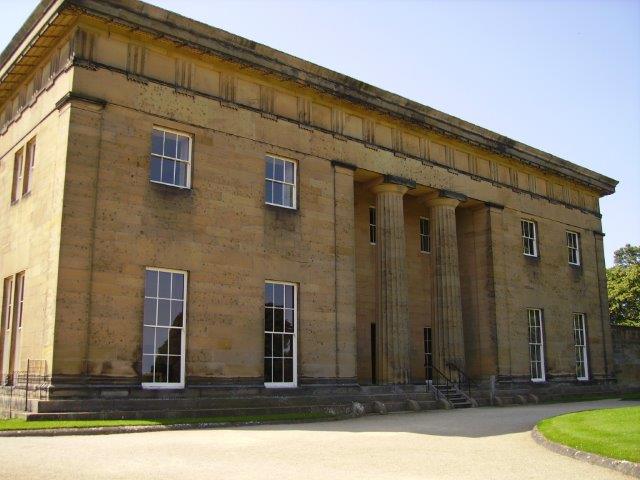This month our trip will explore two lovely locations in God’s own county. Our first stop will be the pretty village of Kilburn where we will visit the home and workshop of Robert Thompson, famously referred to as “The Mouseman”. Born in the village in 1876, Thompson dedicated his life to the craft of carving and joinery in English Oak. The famous mouse symbol on all items carved by his workshop relates back to a remark, which Thompson heard, made by one of his craftsmen: “We are all as poor as church mice”. From then on Thompson adopted the mouse as his logo. He became known throughout the country for his magnificent church furniture, some of which might be seen later in the church at Ampleforth Abbey. Thompson’s business still flourishes today with the main emphasis now on the carving of domestic furniture.
Our second visit of the day will be to Ampleforth Abbey, home since 1802 to an Order of Benedictine Monks. The Abbey was founded in a house given to Father Anselm Bolton by Anne Fairfax of Gilling Castle (also Fairfax House, York). The community established a school for boys, which still flourishes today as a co-educational independent boarding school. The Abbey Church is a major work by the distinguished C20th church architect, Sir Giles Gilbert Scott. It contains some beautiful choir stalls carved by Robert Thompson.
For more than 200 years the monks have grown apples in the Abbey Orchards. These orchards grow over 40 different varieties of apples from 2,000 trees on a 7-acre site. Now the monks have turned their hands to making cider, which is produced on-site, in the Abbey Cider Mill. Their award-winning North Yorkshire Cider can be tasted and bought on the premises.
Our first stop of the day will be in Kilburn. Here we will divide into two groups. Whilst one group enjoys a guided tour of the museum (about 45 minutes), the other group will be free to explore the gift shop, showroom and workshop. Please note that the museum is on two floors with no lift. Refreshments in the café will be on an individual basis. The local parish church may also be of interest as it contains some pews carved by Robert Thompson. The groups will then change over and at the end of the morning there will be a short drive of 20-30 minutes to Ampleforth Abbey.
On arrival at Ampleforth Abbey, lunch will be served at “The Windmill”, a private venue. This will consist of soup, sandwiches, Ampleforth Apple Cake, tea and coffee. There will then be a guided tour of the Abbey Orchard and Cider Mill with a chance to taste some of the local produce.
The tour will last about 1.5 hours. Please note that the tour will be outside for some of the time and that the ground could be slippery and uneven. Sensible footwear and appropriate outerwear is recommended. The Cider Mill is a working space and caution is advised around machinery, uneven floors and possible slippery surfaces. Tea, coffee and biscuits will be dispensed at the end of the `tour.
There will then be some free time to explore the Abbey Church and Visitors’ Centre.
Ingleby’s coach will pick up at Memorial Gardens, Leeman Road, York, at 9.00am and in Long Street, Easingwold (outside the Co- op) at 9.30am. The journey time will be around 1-1.5 hours. The coach will leave Ampleforth Abbey at 5.00pm and arrive in Easingwold around 6.00pm and in York around 6.30pm.
COST: The cost of the trip is £36 which includes the coach hire, guided tour of the museum at Kilburn, lunch at Ampleforth Abbey, tour of the Abbey Orchards and Cider Mill, afternoon refreshments and coach driver’s gratuity.





















